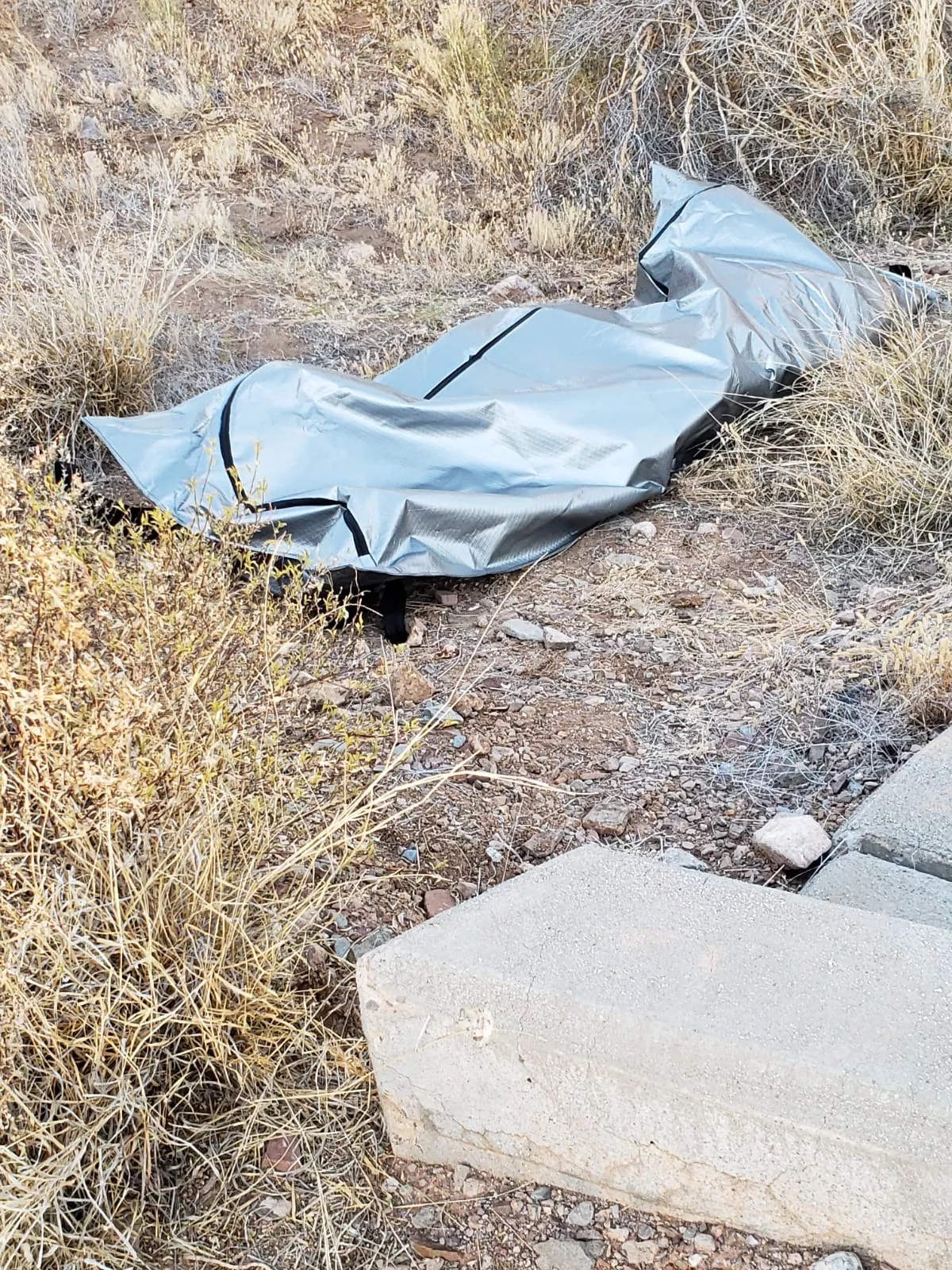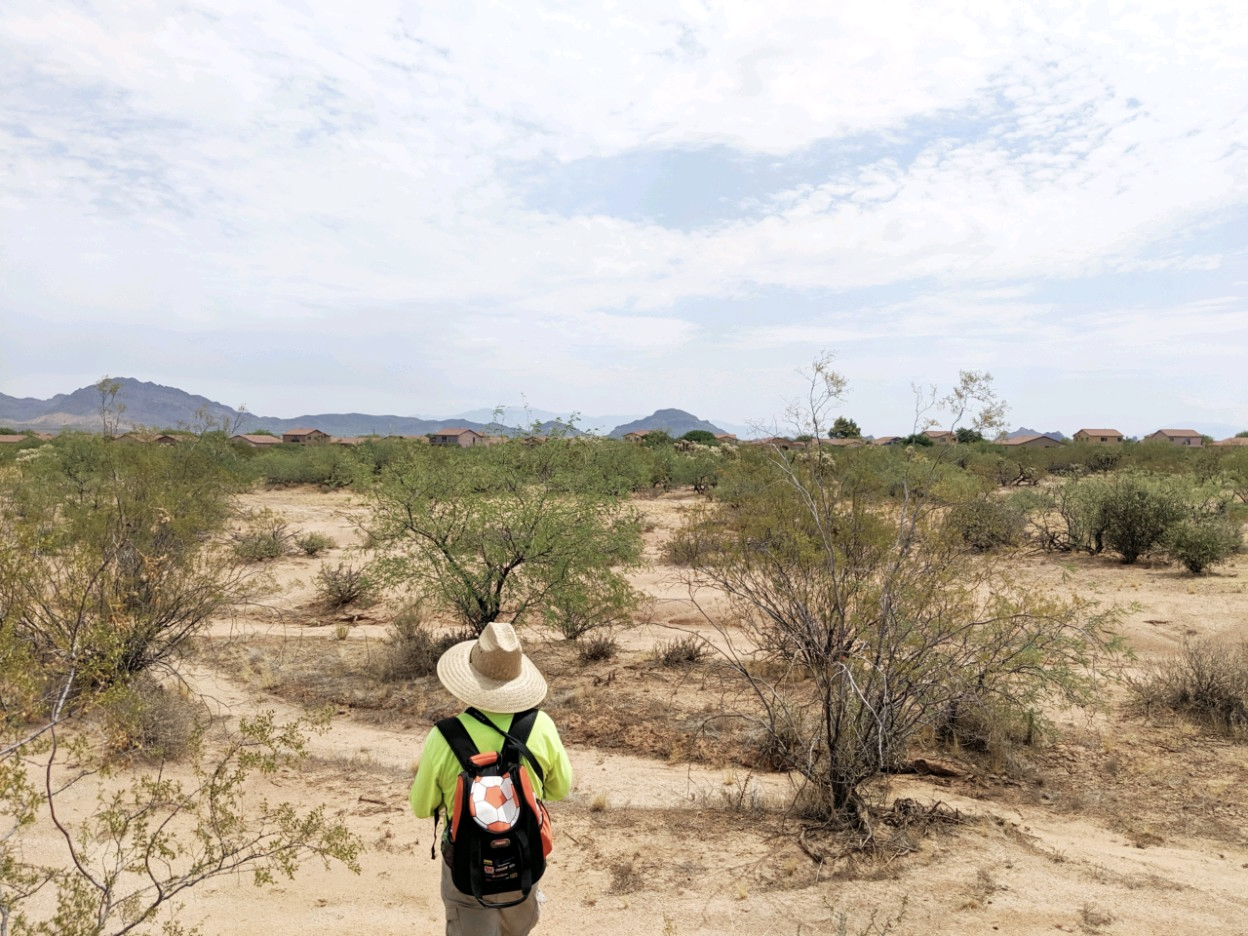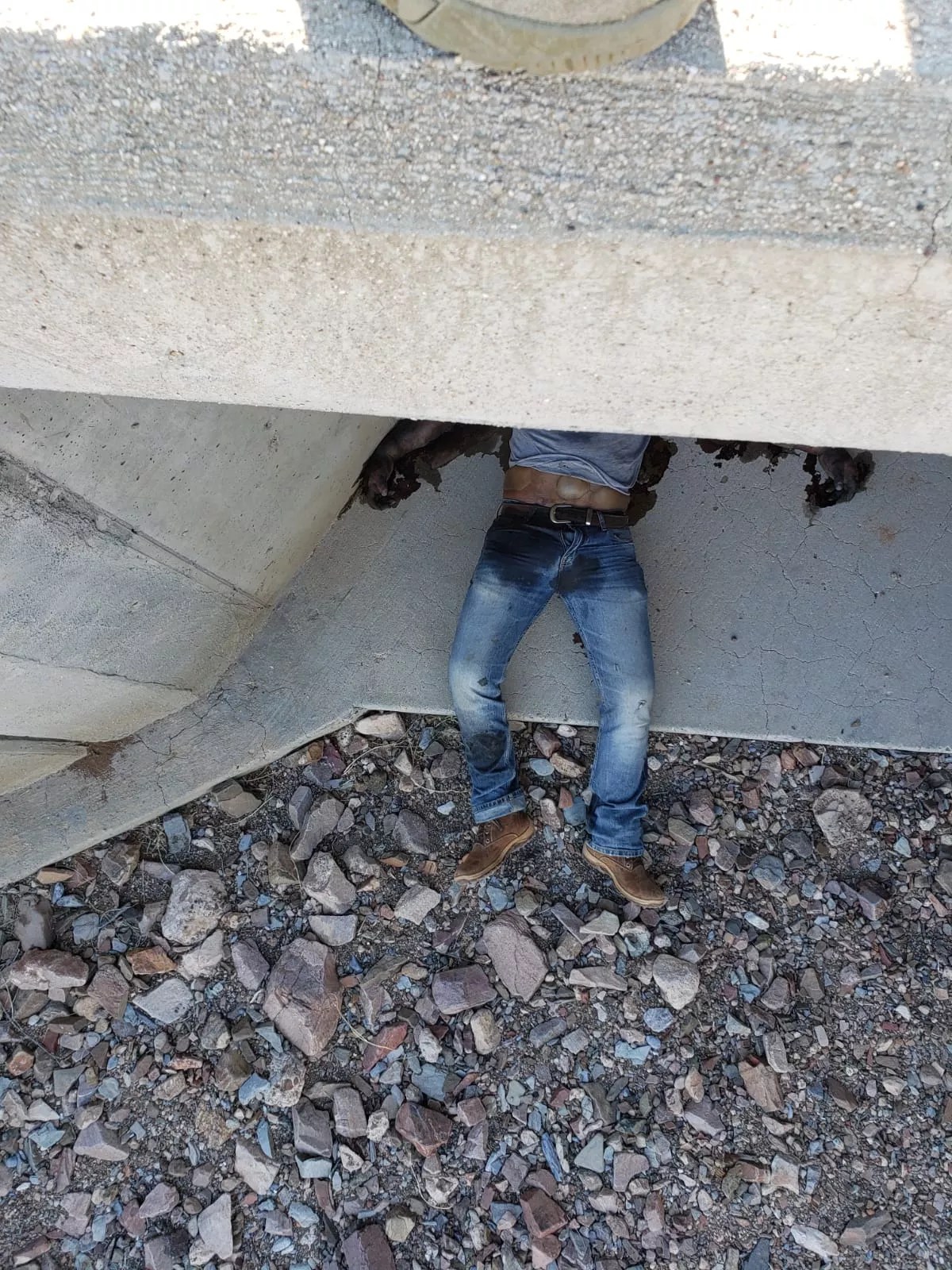
James R. Holeman

Audio By Carbonatix
James Holeman used to love surfing in Hawaii, because it connected him to the outside – forcing him to pay attention to the weather, the humidity, and the wind’s speed and direction.
Now he was back, nose turned to the sauna-like air, under very different circumstances. It was 101 degrees just outside Tucson, which was good – the heat would force the smell up off the ground more rapidly. He wore a neon yellow vest, sweeping the dirt, scanning the earth. He’d arrived at 6 a.m. Monday, bidding a burning mountain outside his home of Flagstaff goodbye just several hours earlier.
Walkie-talkie in hand, Holeman looked for footprints, consulting a small, hand-drawn map he and the others had been given. Like an awful treasure hunt, he remembers thinking.
Hours passed and still, nothing. Then he spotted a vulture.
The group changed course, following the bird. The ground was soon littered with newer-looking water bottles. Then Holeman saw her feet, peeking out from a bush. A body wrapped in a woven blanket, just as promised.
He looked up. Two retirees were peering out at them from their balcony. The woman had died just a few feet from a new housing development off State Highway 86.
“People don’t understand that this is quite literally happening in our backyard,” said Holeman.

One of the two people Aguilas Del Desierto volunteers found on Sunday and Monday in Arizona. Both died on the journey across the Arizona desert into the United States.
James R. Holeman
It was the second body Aguilas Del Desierto, a nonprofit volunteer group that looks for undocumented migrants who go missing along the border in California and Arizona, had recovered in the last 24 hours.
Every year, hundreds of people die crossing the border from Mexico into the United States. Since 2001, an estimated 3,000 undocumented migrants have died in Arizona’s Pima County jurisdiction alone, according to the Pima County Office of Medical Examiner – including the two migrants whose remains were found earlier this week.
Groups like Aguilas Del Desierto, with whom Holeman has been volunteering with for the past year, are often the ones who retrieve them. “I’d been in the military, but I’d never seen a deceased person. I’ve personally discovered five this year – and seen a lot more.”
It can take up to seven days to cross the Arizona desert, a cruel expanse where some migrants trek for up to 100 miles. Most crossers die of exposure to the extreme heat, according to Dr. Greg Hess, Chief Medical Examiner of Pima County, whose office tracks undocumented border-crossers’ deaths within its jurisdiction.
If someone is found right away, the odds are fairly good they can be identified. This usually means a group the deceased person had been crossing with is able to notify volunteers or authorities within 24 hours – as was the case with the woman discovered Monday.
More often than not, bodies are not recovered soon after death. The environment is unforgiving and efficient. Within weeks, people are reduced to bones, the colors of the clothes they chose to wear bleached, the photos they carried overexposed and identifiable.
“The Arizona desert is really good at dehumanizing these remains,” said Holeman. “And sadly, I think that helps in deteriorating people’s connection with there being a person out there.”
The woman discovered on Monday was 22 years old. Her ID card indicates she was a university student from Guerrero, Mexico, a state that’s experienced an uptick of women and children leaving to Arizona after rising gang violence led to the shutdown of many area schools, according to Kino Border Initiative, a binational organization that collects data on people crossing the Arizona-Mexico border. She had two kids, still back home in Mexico.

The university ID of the 22-year-old woman whose body was recovered Monday. She was a mother of two.
James R. Holeman
Though Aguilas Del Desierto is well-known in Central America and frequently receives calls from people who feel unsafe calling U.S. government agencies for help, it was an unusual weekend for the group – an unplanned search. There were only five searchers – typical searches involved groups of at least 30 – and most of the group had come from California to Arizona primarily to accept a public service award in Phoenix for the organization’s work. They opted to undertake this recovery instead after receiving a call from the people the young woman was traveling with. They said she’d fallen ill and collapsed, then died shortly after CPR failed to revive her. They wrapped her in a blanket, and gave volunteers her height, age, and rough coordinates. Notably, they’d drawn a crude map and texted a video of the location where they left her, the Sonoran sun urging them to continue on with the journey.
Since the 1990s, the United States government has had a policy of pushing people into the untenable Arizona desert. Then-president Bill Clinton introduced Prevention Through Deterrence, a border security policy that closed known migrant routes through increased surveillance and militarization of the border, with the expressed aim of deterring immigrants by forcing them to cross through more remote, unlivable areas. The assumption was that people would simply stop coming if the journey was made difficult enough.
Data suggests that Prevention Through Deterrence has done little to curb migration, but deaths along the border have spiked since its implementation. In 1994, the year the policy was enacted, 14 people died while crossing. Last year in Arizona alone, Pima County recorded 127 people whose bodies were recovered after they died on the journey. Experts believe nearly 9,000 people have died while crossing into the United States in the past two decades.
Despite efforts of groups like Aguilas Del Desierto, many bodies remain in the Sonoran desert, undiscovered and unaccounted for.
“The remains have become a shrine for people who are crossing. They’re markers – directional aids,” said Holeman. “They’re Mount Everest.”

A map border-crossers texted to the volunteers to help locate the deceased woman’s body.
James R. Holeman
The volunteer organization, like many others, partners with Border Patrol and local law enforcement to recover remains, notifying them when a body is found and outlining the individual in highlighter-pink tape so they’re easy to locate (volunteers do not touch bodies they discover). But no U.S. government agency is formally tasked with retrieving remains of border-crossers who die within United States territory. Border Patrol data reflects this attitude – while the agency is often crucial in the rescue of migrants who have fallen ill on the journey into the United States, when it comes to number of people who have died at the border, Border Patrol only accounts for bodies it has located, and not people discovered by volunteers and humanitarian groups. (This is why many sources often report numbers of migrant deaths from Medical Examiner’s offices, which tend to account for both Border Patrol-discovered deaths as well as anyone else who appears to have died as a undocumented border-crosser).
Border Patrol finds about 50 percent of border-crosser remains in Arizona, according to Dr. Greg Hess, chief medical examiner of Pima County. And the other half? “Whoever else happens to be out there,” Hess said.
“You know, it’s common to have news stories about these bodies being found, but they’re found by us – these wacky, DIY, volunteer groups,” said Holeman. “There’s no systematic search, there’s no agencies out there doing any sweeps. We’re the wealthiest country in the world … and we just leave them out there.”
So far this year, at least 74 people have died crossing the Mexico border into Arizona, according to the Pima County Office of the Medical Examiner and the Yuma County Medical Examiner’s Department.

A volunteer combs the desert near a Tucson housing development off State Highway 86.
James R. Holeman

The body of the other migrant the volunteers found in a culvert. They knew much less about who he was or where he had traveled from.
James R. Holeman